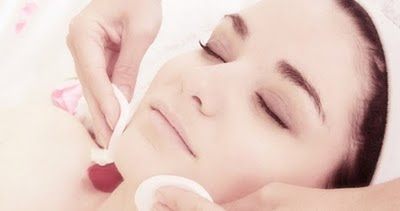
Many Western women do not wear make-up or simply use a quick application of mascara and lip gloss. Why?
The answer of the majority of women is "because I don't know what to do". Very few might say that they look great without make-up.
Are you really sure? Imagine your favourite, adorable model or celebrity. Even the most gorgeous looking leading ladies always wear make-up to look great. You will never see them without make-up on the red carpet. You too can look great by wearing the right make-up.
To achieve great results from make-up, it is vitally important to prepare your skin properly. Without preparation, you cannot expect it to look good with only "cheaty" make-up.
Skip this process and you will never achieve good results, no matter how much you struggle with expensive foundation and concealer.
Spend an extra five minutes in the morning and ten minutes before bedtime.
1) Wash your face
Always wash your face with fresh, running, lukewarm water. Take off your make-up with wipes, but don't stop there. Although you cannot see it with bare eyes, your skin pores gradually build up dirt and collect the remains of make-up. Over time, this will cause skin problems.
2) Choose your face wash carefully
Dry skin, oily skin or combination skin? Don't just grab anything from your mother's or flatmate's cabinet.
Test your skin by stroking it with your fingers. If it feels a bit rough and bumpy, apricot scrub could be a great solution.
3) Use toner
After rinsing off your face with clean water, give a generous splash of toner. Gently tap your skin with the palms of your hands (no slapping).
Your skin needs both, fluid and moisture, no matter which season. Use toner and moisturiser to balance your skin into good condition.
4) Use the right amount of moisturiser
Put just the right amount of moisturiser onto the palms of your hands, smear it all over by rubbing both hands against each other, then cover your face with your hands. This will allow you to spread the moisturiser evenly.
Use your finger tips around the eyes and nose. Dub delicately.
Feel to check if your skin is absorbing the moisturiser: If your skin still feels greasy after 5 minutes, you are putting on too much. If your skin feels dry or pulls, you are not using enough moisturiser.
If you have spots or sensitive skin, don't be afraid to touch your face. Your skin needs help, not neglect. You might think the less you touch the better, but this does not mean that you cannot do anything about problem areas.
If a huge, ripe spot is staring at you, my advice is to pop it. Then immediately apply disinfectant spot formula (available at your chemist's).
Make-up cannot hide something sticking out of your skin (in pictures, you will see the unpleasant shadows of spots), but you can hide flat, "used-to-be-spot" areas with concealer.
Sensitive skin needs more attention. The right balance of toning and moisturising often solves the problem. The process is the same, but be sure to use products for sensitive skin.
People with oily skin are often tempted to forget about their moisturiser, which is a big mistake. The skin is designed to produce grease to keep it moist - nature's work. The more you neglect your oily skin, the more greasy it will get, creating a breeding ground for other problems such as spots, open pores and blackheads.
Your skin always needs tender, loving care - every day and throughout the year, not just during the cold months.






.jpg)


0 comments:
Post a Comment